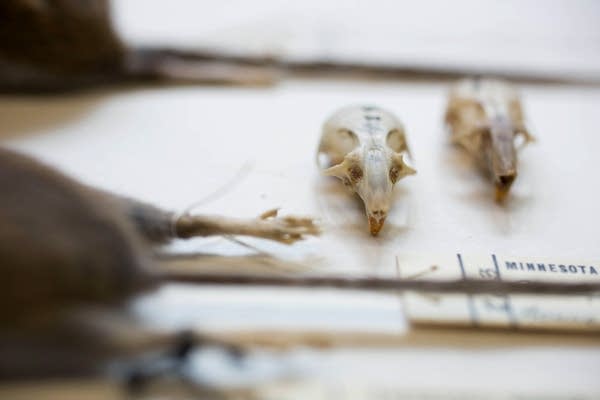City mouse vs. country mouse: Study finds urban animals develop larger brains
Go Deeper.
Create an account or log in to save stories.
Like this?
Thanks for liking this story! We have added it to a list of your favorite stories.

Researchers at the University of Minnesota have found evidence that some wild animals living in urban areas develop larger brains than their rural counterparts.
Dr. Emilie Snell-Rood, a biologist at the University of Minnesota, examined ten species native to Minnesota by looking at skulls collected at the Bell Museum of Natural History. The brain cavities of two of the species -- the white-footed mouse and the meadow vole -- were about 6 percent larger in urban animals.
Snell-Rood said the larger brains might allow animals to better cope with challenges, like traffic, that accompany human development.
"Relative to what animals may have seen over the last several million years, a city or human environment is completely different," Snell-Rood said. "Having some kind of flexibility in behavior might be beneficial in that sort of environment."
Turn Up Your Support
MPR News helps you turn down the noise and build shared understanding. Turn up your support for this public resource and keep trusted journalism accessible to all.

It isn't the first time that researchers have discovered differences between urban and rural animals. Studies have found that some birds change the frequencies of their songs in cities to stand out from urban noise. The growth of urban animals' brain cavities also could be due to nutritional changes in city living or genes.
"We can speculate that maybe it has to do with exploring new food sources, [or] some of the challenging spatial navigation that might come through going through your town or house or yard," Snell-Rood said.
The study also found significant cranial growth over the last century for some rural species like bats and shrews, which Snell-Rood said could be due to the fact that the animals need to travel further to find food as humans dominated the landscape. She said the study's results could be relevant to debates about conservation.

"This kind of work highlights, at least for some species, they are sort of coping with humans," Snell-Rood said. "But some of the other species, the ones that we never see in cities, those are the ones that we need to think about: how we can help conserve that biodiversity?"
Snell-Rood said there's still much research to be done in the area, including studies of whether urban Minnesota species differ from animals in cities on the East Coast. But she notes, just because an animal's brain is larger, doesn't mean it's smarter.
Interview transcribed by Jon Collins, MPR News.





